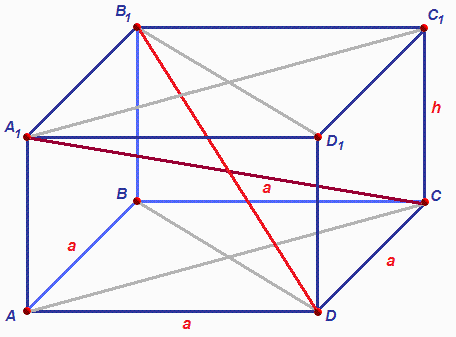Instruction
1
A parallelepiped is a prism whose base is a parallelogram. The parallelepiped has a face - all the planes that form the given shape. In total he has six faces and all are parallelograms. Opposing faces are equal and parallel. In addition, it has diagonals that intersect at one point and it split in half.
2
The parallelepiped is of two types. At first all faces are parallelograms, and the second with rectangles. The last of them is called a rectangular parallelepiped. He has all faces rectangular, and the side faces are perpendicular to the base. If the cuboid has faces, the Foundation of which the squares, it is called a cube. In this case, its faces and edges are equal. An edge is called a face of any polyhedron, which include the box.
3
In order to find the volume of a parallelepiped, you must know the area of its base and height. The amount is based on what appears parallelepiped in terms of the problem. The common box in the base is a parallelogram, and rectangular - rectangular or square, whose corners are always straight. If the base of a parallelepiped is the parallelogram, then its volume is as follows:
V=S*H, where S is the total area of the base H is the height of the box
The height of the parallelepiped is usually its lateral edge. At the base of the parallelepiped may also be a parallelogram, not a rectangle. Of course of plane geometry it is known that the area of a parallelogram is equal to:
S=a*h, where h is the height of a parallelogram, a is the length of the base, ie :
V=a*hp*H
V=S*H, where S is the total area of the base H is the height of the box
The height of the parallelepiped is usually its lateral edge. At the base of the parallelepiped may also be a parallelogram, not a rectangle. Of course of plane geometry it is known that the area of a parallelogram is equal to:
S=a*h, where h is the height of a parallelogram, a is the length of the base, ie :
V=a*hp*H
4
If the second case is when the base of the box - a rectangle, the volume is calculated using the same formula, but the footprint is in a little different way:
V=S*H,
S=a*b, where a and b are, respectively, side of the rectangle and edges of the parallelepiped.
V=a*b*H
V=S*H,
S=a*b, where a and b are, respectively, side of the rectangle and edges of the parallelepiped.
V=a*b*H
5
For finding the volume of a cube should be guided by simple logical ways. Since all faces and edges of a cube are equal, and at the base of the cube - square, in accordance with formulas specified above, we can derive the following formula:
V=a^3
V=a^3



